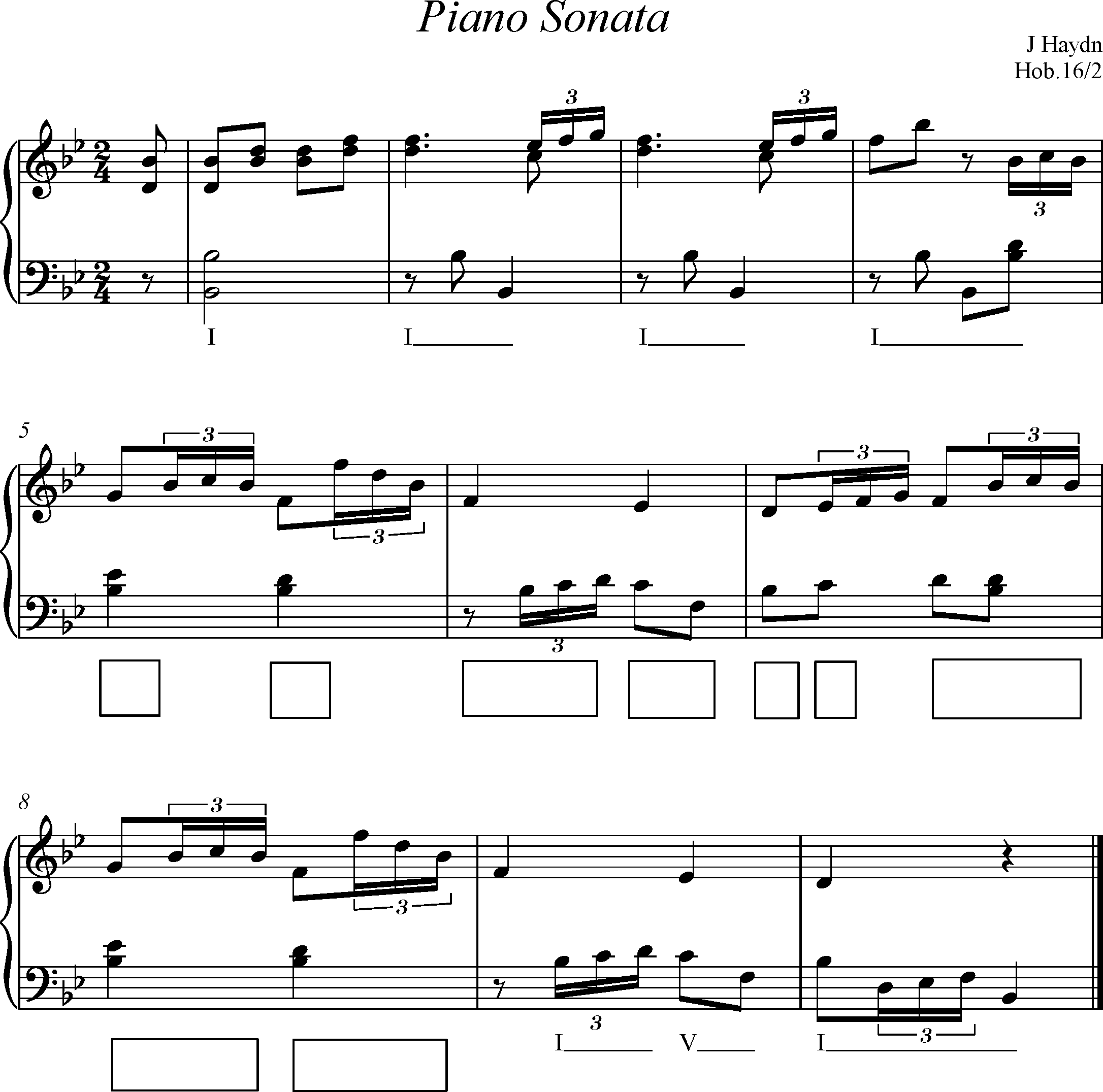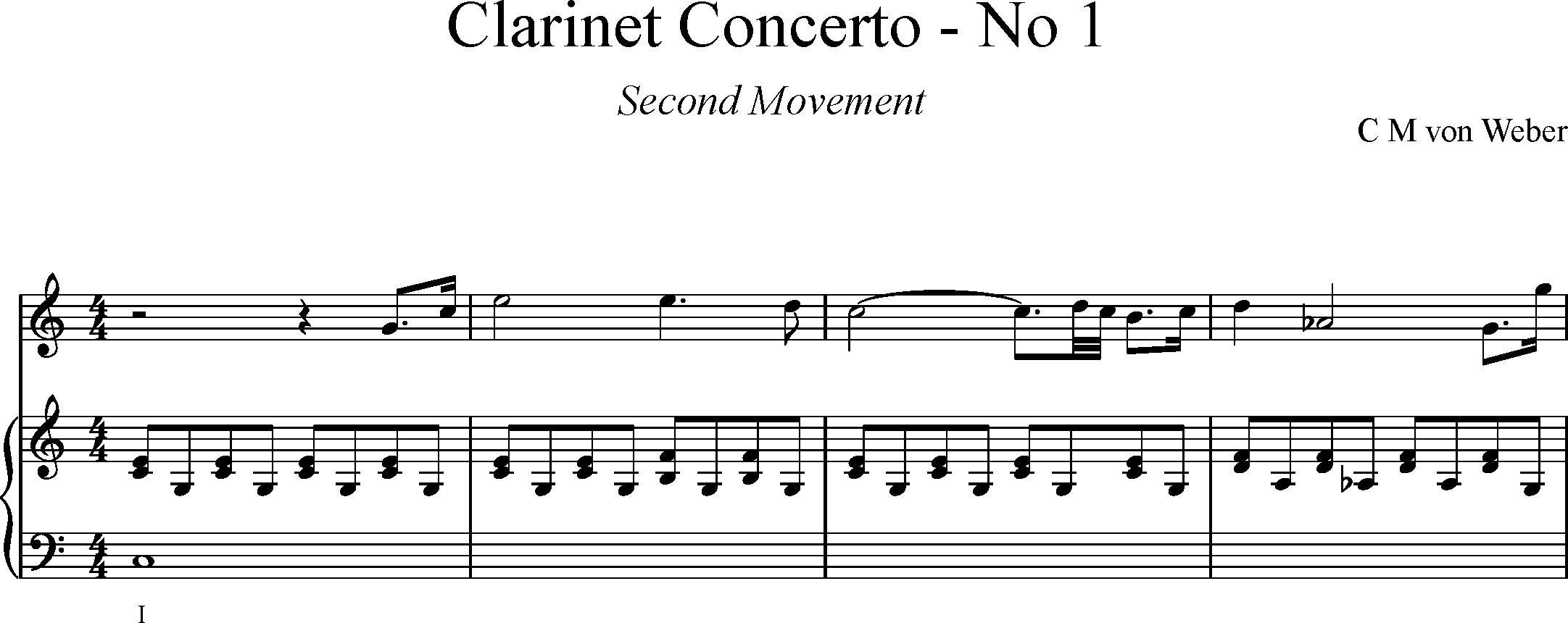Here is an example of another composer varying the texture of the accompaniment. The excerpt comes from the Sonata in B♭ by Haydn (Hob.16/2). Listen to the recording and look at the copy before identifying the chords that Haydn uses in bars 5-8
What is the difference between the way Haydn uses the tonic in bar 1 compared to bars 2 and 3?
Fig. 4

Here is part of the second movement of C M von Weber’s Clarinet Concerto no.1. There are gaps in the bass line of the accompaniment. Complete the bass line so that it fits with the clarinet melody and the chords played in the treble part of the accompaniment.
Notice how the broken chords in the accompaniment provide contrast to the long rhythms of the solo.
Fig. 5

Decide which rhythms would fit the texture in order to have an interesting bass line.

Imperfect cadence (I-IV)

Focus on just the clarinet melody. Each phrase starts with an anacrusis.
Fig. 6

Consider how Weber has varied the clarinet line in the last phrase.
Here are snippets of melodies for you to practise development through variation.
- Melodies 1 and 2 give ideas of how to vary and embellish the melody.
- Melody 3 is incomplete and melody 4 gives you the chance to create an entire melody yourself.
Fig. 7
